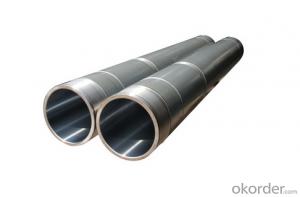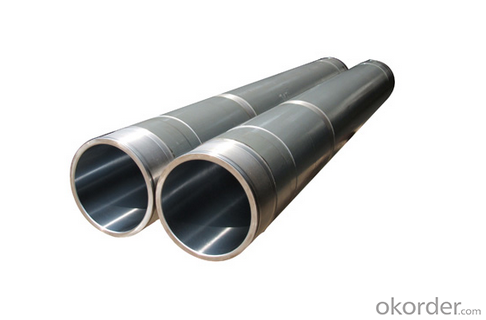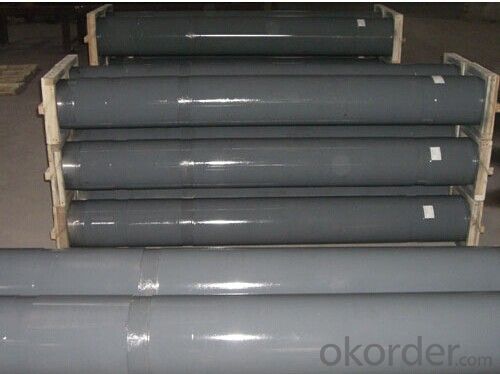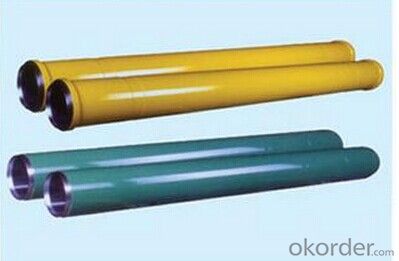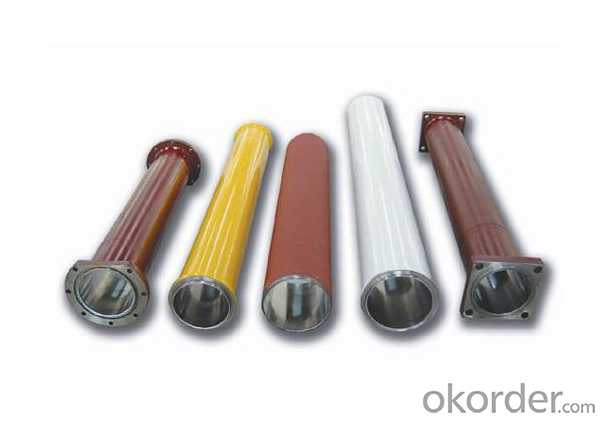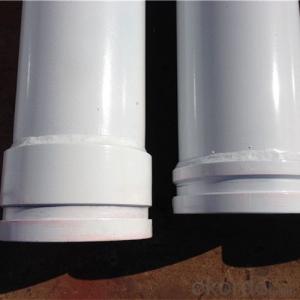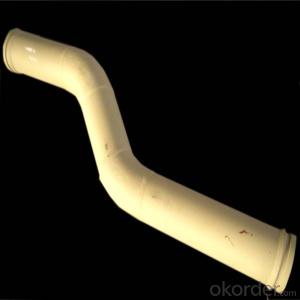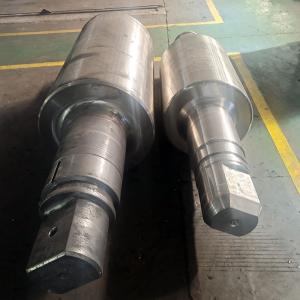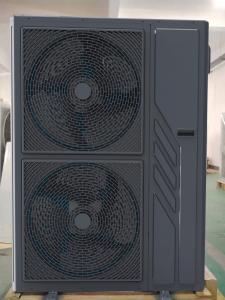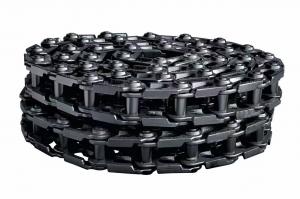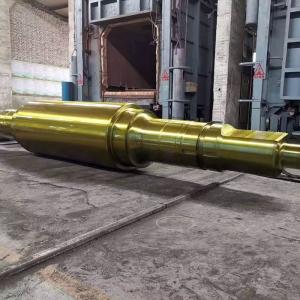PUMPING CYLINDER(SANY ) I.D.:DN180 CR. THICKNESS :0.25MM-0.3MM LENGTH:1545MM
- Loading Port:
- Shanghai
- Payment Terms:
- TT OR LC
- Min Order Qty:
- 2 pc
- Supply Capability:
- 1000 pc/month
OKorder Service Pledge
OKorder Financial Service
You Might Also Like
Product Description:
The Concrete Pump Delivery Cylinder DN180*1545 normally made by steel material No. C45. according to customer’s requests, and also package in bundles or nude packing directly put into container.
Scope of Application of the Cylinders
The Pump Delivery Cylinder DN180*1545 is a Cylinder pumping for combined use with other concrete pumps parts in concrete pumping operations. It can be widely used in the construction of various types of concrete structures like industrial and civil buildings, bridges, roads, and other types of infrastructure.
This Cylinder Cylinder DN180*1545 can only be used in concrete pump construction operations, but not in any other operations, like dragging, moving, or hoisting heavy articles or personnel. The pipe is also not allowed to be used in any location where any combustible or explosive material exists or a cave-in may occur.
Specifications:
Concrete Pump Delivery Cylinder DN180*1545
1. Capacity: 60,000~80,000cbm
2. Size: DN180, DN200, DN230.DN250
3. Material: C45
4. quenching and tempering to improve the hardness to HB241-280
5. inner wall chrome thickness is 0.25-0.30mm, hardness HV820-900.
6. Brand: SCHWING, PM, SANY, KYOKUTO, CIFA
7. Capacity: 60,000~80,000cbm
Product Advantages:
OKorder's Cylinders DN180*1545 Channels are durable, strong, and safety.
Main Product Features:
· Premium quality
· Prompt delivery & seaworthy packing (10-20 days)
Reliable performance
Easy to weld
High safety.
· Professional Service
· Competitive pricing
Measuring of wall thickness from the outside
Low purchase cost
FAQ:
Q1: How long about delivery time about DN180*1545 ?
A1: Normally we keep the raw materials for old customers and sometime we also keep stock products to make sure delivery time in any emergency cases.
Q2: How do we guarantee the quality of our Cylinders DN180*1545?
A2: We have established an advanced quality management system which conducts strict quality tests at every step, from raw materials to the final product. At the same time, we provide extensive follow-up service assurances as required.
Q3: How soon can we receive the product after purchase?
A3: Within three days of placing an order, we will book the vessel for goods. The specific shipping date is dependent upon international and government factors, but is typically10 to 30 workdays.
Q4: If we can produce some Cylinders DN180*1545 according to customers request?
A4: Yes, we can produce Cylinders DN180*1545 according to the difference country situations to make it suitable to the market and customers. We have very professional technical team to make the design.
Q5: How to make a quick resolution for after service?
A5: OKorder and our manufacture both have overseas branches all-around of world, If needed,
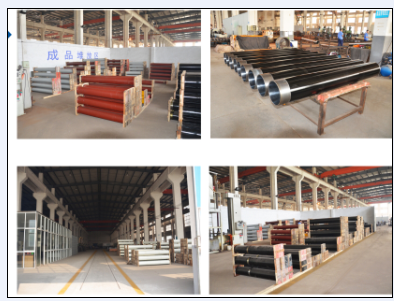
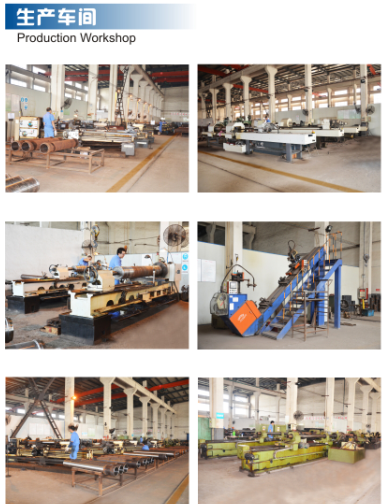
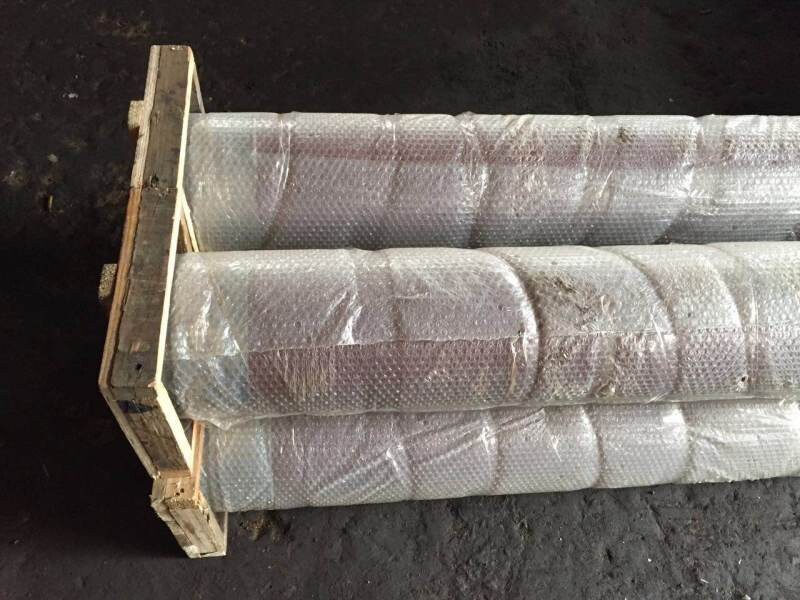
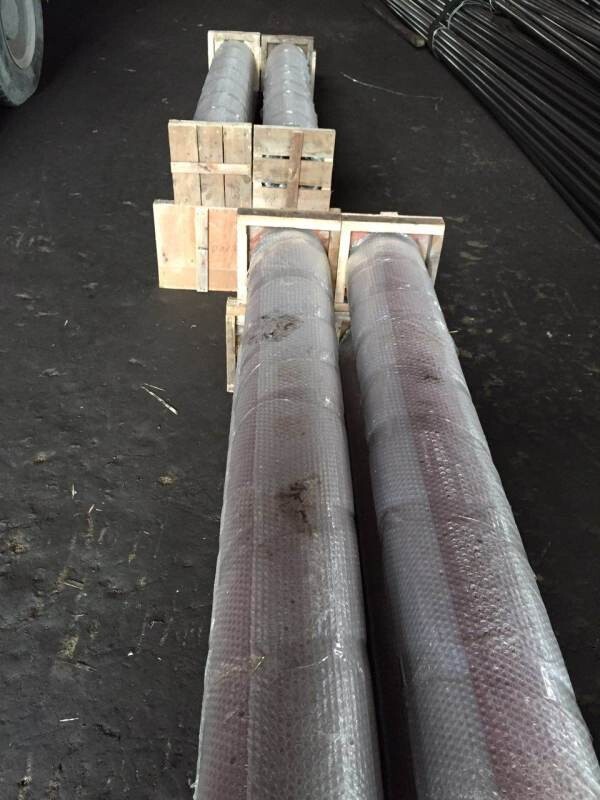
- Q:Are there any specific guidelines for the selection and installation of hydraulic components in concrete pump spare parts?
- Concrete pump spare parts have specific guidelines for the selection and installation of hydraulic components. When choosing these components, it is important to consider factors like the maximum operating pressure, flow rate, and compatibility with the existing hydraulic system. First and foremost, it is crucial to ensure that the selected hydraulic components can handle the maximum operating pressure of the concrete pump. This includes components such as hydraulic cylinders, valves, and pumps. To ensure their durability and longevity, it is advisable to choose components with a higher pressure rating than that of the concrete pump's operating pressure. Additionally, the flow rate of the hydraulic components must match the requirements of the concrete pump system. Hydraulic pumps and valves need to provide sufficient flow to effectively operate the concrete pump. Factors such as the size of the concrete pump, desired output capacity, and specific pumping requirements should be taken into consideration. Furthermore, compatibility with the existing hydraulic system is vital for the smooth operation of the concrete pump. It is important to select hydraulic components that are compatible with the system in terms of fittings, connections, and overall design. Seeking guidance from the manufacturer's guidelines or professional advice is recommended when selecting and installing hydraulic components in concrete pump spare parts. Moreover, proper installation is essential to ensure optimal performance and safety of the hydraulic components. Following the manufacturer's installation instructions and guidelines is highly recommended. The installation process should include proper alignment, secure mounting, and appropriate sealing of the components to prevent any leaks or failures. In conclusion, there are specific guidelines for selecting and installing hydraulic components in concrete pump spare parts. Considering factors like maximum operating pressure, flow rate, compatibility, and following proper installation procedures can help ensure the efficient and safe operation of the concrete pump system.
- Q:Are there any specific guidelines for the installation of hopper components or agitators in concrete pump spare parts?
- Yes, there are specific guidelines for the installation of hopper components or agitators in concrete pump spare parts. These guidelines typically include instructions on proper alignment, securing of bolts, lubrication, and ensuring all components are properly connected. It is important to follow these guidelines to ensure safe and efficient operation of the concrete pump.
- Q:Can concrete pump valves be repaired or should they be replaced?
- Concrete pump valves can be repaired in most cases. However, if the damage is extensive or the valve is severely worn out, it might be more cost-effective to replace it instead of repairing it. The decision to repair or replace the valve depends on the specific situation and the advice of a professional.
- Q:How can one differentiate between genuine and counterfeit concrete pump spare parts?
- To differentiate between genuine and counterfeit concrete pump spare parts, one should consider several factors. Firstly, it is crucial to purchase spare parts from authorized and reputable dealers or manufacturers. Genuine parts are typically sold through official channels, ensuring their authenticity and quality. Secondly, one should carefully inspect the packaging and labeling of the spare parts. Genuine parts often have clear branding, product numbers, and proper packaging, while counterfeit parts may have inconsistent labeling or poor quality packaging. Additionally, examining the quality and durability of the spare parts is essential. Genuine parts are manufactured to meet strict standards and are more likely to be durable and reliable. Lastly, seeking professional advice or consulting with experts in the industry can provide valuable insights into identifying genuine concrete pump spare parts.
- Q:What are the different types of concrete pump hopper cylinders?
- In the construction industry, there exists a variety of concrete pump hopper cylinders that are commonly utilized. These cylinders possess a vital function in the operation of concrete pumps, as they supply the necessary pressure and force to facilitate the movement of concrete throughout the system. One particular kind of concrete pump hopper cylinder is the single-acting cylinder. This cylinder operates by utilizing hydraulic pressure to extend the piston rod, which subsequently propels the concrete out of the hopper and into the pumping system. Single-acting cylinders are renowned for their simplicity and reliability, thus making them a favored choice for numerous construction projects. Another type of concrete pump hopper cylinder is the double-acting cylinder. As the name implies, this cylinder operates in both directions, enabling a more efficient and powerful pumping process. Double-acting cylinders possess the capability of pushing the concrete out of the hopper during the extension stroke, as well as pulling the piston rod back during the retraction stroke. Consequently, this results in a greater pumping capacity and increased productivity. Furthermore, there is also a range of sizes and capacities available for concrete pump hopper cylinders. These sizes vary, with smaller cylinders suitable for smaller construction projects, and larger cylinders capable of handling heavy-duty pumping operations. The selection of cylinder size relies on factors such as the volume of concrete to be pumped, the distance and height of the pumping location, and the specific requirements of the project. In conclusion, the assortment of concrete pump hopper cylinders encompasses single-acting cylinders and double-acting cylinders. Each type possesses its own advantages and is suitable for different construction applications. The determination of the cylinder's size and capacity should be based on the specific necessities of the project. Ultimately, the selection of the appropriate cylinder type is essential in guaranteeing efficient and effective concrete pumping operations.
- Q:How often should concrete pump remote control batteries be replaced?
- Concrete pump remote control batteries should be replaced as needed, typically when they no longer hold a charge or fail to power the remote control effectively. The frequency of replacement will depend on factors such as battery quality, usage, and maintenance.
- Q:How often should hydraulic filters be replaced in a concrete pump?
- Hydraulic filters in a concrete pump should be replaced on a regular basis to ensure optimal performance and longevity of the equipment. The exact frequency of replacement will depend on various factors such as the specific model of the concrete pump, the operating conditions, and the quality of hydraulic fluid used. As a general guideline, it is recommended to replace hydraulic filters in a concrete pump every 500 to 1,000 operating hours or at least once a year, whichever comes first. However, it is essential to refer to the manufacturer's recommendations and guidelines for the specific model of the concrete pump, as they may have specific maintenance schedules and intervals. Regular inspection of the hydraulic filters is also crucial to determine if replacement is necessary sooner than the recommended interval. If the filters are clogged, damaged, or show signs of excessive wear, they should be replaced immediately to prevent any potential damage to the hydraulic system. Additionally, if the concrete pump is operating in harsh or dusty environments, the filters may need to be replaced more frequently to ensure proper filtration and prevent contamination. Overall, proper and timely replacement of hydraulic filters in a concrete pump is essential to maintain the efficiency and reliability of the equipment, prevent potential breakdowns, and extend its service life.
- Q:How is the piping of the concrete pipe designed?
- Vertical upward piping, the ground level pipe length shall not be less than 1/4 of the vertical pipe length, and shall not be less than 15m, or comply with the provisions of the product manual. A stop valve shall be provided at the root of the conveying pipe of the concrete pump Y - shaped pipe discharge port 3 - 6m, so as to prevent the concrete mixture from flowing back
- Q:How do I properly maintain and replace hydraulic hoses in concrete pump spare parts?
- Proper maintenance and replacement of hydraulic hoses in concrete pump spare parts is crucial to ensure the smooth functioning and longevity of your equipment. Here are some steps you can follow to maintain and replace hydraulic hoses effectively: 1. Regular Inspection: Conduct regular visual inspections of the hoses to identify any signs of wear, damage, or leaks. Look for bulges, cracks, abrasions, or fraying at the ends of the hoses. Pay attention to fittings, connections, and bends in the hose as these areas are prone to damage. 2. Preventative Maintenance: Implement a preventive maintenance schedule to reduce the chances of unexpected hose failure. This includes cleaning the hoses regularly to remove dirt, debris, and concrete residues that may cause abrasion or clogging. Use a mild detergent and water to clean the hoses, and ensure they are thoroughly dried before use. 3. Proper Storage: When not in use, store hydraulic hoses in a clean, dry, and temperature-controlled environment. Protect them from direct sunlight, extreme temperatures, and chemicals, as these factors can degrade the hoses over time. 4. Correct Handling: Always handle hydraulic hoses with care to prevent damage. Avoid dragging them on rough surfaces or sharp edges that can cause cuts or abrasions. Do not allow the hoses to kink or twist excessively, as this can weaken the internal structure. 5. Timely Replacement: Replace hydraulic hoses as soon as you notice signs of wear, damage, or leaks. Do not wait for hose failure, as it can lead to costly downtime and potential safety hazards. Follow the manufacturer's recommendations for the replacement interval, which may vary based on the type of hose and its usage. 6. Use Quality Replacement Hoses: When replacing hydraulic hoses, ensure that you use high-quality hoses that are compatible with your concrete pump. Choose hoses that meet industry standards and specifications, as they are designed to withstand the demanding conditions of concrete pumping. 7. Proper Installation: Properly install the replacement hoses, ensuring that they are correctly routed and securely connected to the fittings. Use appropriate tools and techniques to tighten the fittings, avoiding over-tightening that can damage the hose or fittings. 8. Regular Training: Provide regular training to your staff on proper maintenance, inspection, and replacement procedures for hydraulic hoses. This will enhance their knowledge and skills, reducing the risks of improper handling or installation. By following these steps, you can effectively maintain and replace hydraulic hoses in concrete pump spare parts, ensuring the safety and efficiency of your equipment. Remember to consult the manufacturer's guidelines and seek professional assistance whenever necessary.
- Q:Are there any regulatory requirements for the quality and standards of concrete pump spare parts?
- Concrete pump spare parts are subject to regulatory requirements that govern their quality and standards. These requirements are in place to guarantee safety, performance, and durability. These regulations are established by entities such as governmental agencies or industry associations, with the aim of safeguarding consumers and ensuring the proper functioning of concrete pumps. Several common regulatory requirements apply to concrete pump spare parts: 1. Certification: Authorized organizations may certify spare parts or subject them to specific testing processes to verify compliance with quality and performance standards. This certification helps ensure the safety and reliability of the spare parts. 2. Material Standards: Specific material standards may be imposed on spare parts. For example, the materials used in their construction must meet requirements for strength, corrosion resistance, or temperature resistance. 3. Design and Manufacturing Standards: The design and manufacturing processes of spare parts must adhere to certain standards. These standards cover dimensions, tolerances, manufacturing techniques, and quality control procedures in order to ensure consistent and reliable performance. 4. Performance and Compatibility Standards: Spare parts should be designed and manufactured to perform within defined parameters and be compatible with the concrete pump system they are intended for. This guarantees proper and safe functioning of the spare parts when installed in the pump. 5. Documentation and Labeling: Regulatory requirements often mandate that spare parts be accompanied by proper documentation, including user manuals, installation instructions, and maintenance guidelines. Additionally, labeling requirements may exist to clearly identify the spare parts and their specifications. Manufacturers, suppliers, and users of concrete pump spare parts must be aware of and comply with these regulatory requirements to ensure the safety and effectiveness of the concrete pump system.
1. Manufacturer Overview |
|
|---|---|
| Location | |
| Year Established | |
| Annual Output Value | |
| Main Markets | |
| Company Certifications | |
2. Manufacturer Certificates |
|
|---|---|
| a) Certification Name | |
| Range | |
| Reference | |
| Validity Period | |
3. Manufacturer Capability |
|
|---|---|
| a)Trade Capacity | |
| Nearest Port | |
| Export Percentage | |
| No.of Employees in Trade Department | |
| Language Spoken: | |
| b)Factory Information | |
| Factory Size: | |
| No. of Production Lines | |
| Contract Manufacturing | |
| Product Price Range | |
Send your message to us
PUMPING CYLINDER(SANY ) I.D.:DN180 CR. THICKNESS :0.25MM-0.3MM LENGTH:1545MM
- Loading Port:
- Shanghai
- Payment Terms:
- TT OR LC
- Min Order Qty:
- 2 pc
- Supply Capability:
- 1000 pc/month
OKorder Service Pledge
OKorder Financial Service
Similar products
New products
Hot products
Hot Searches
Related keywords
